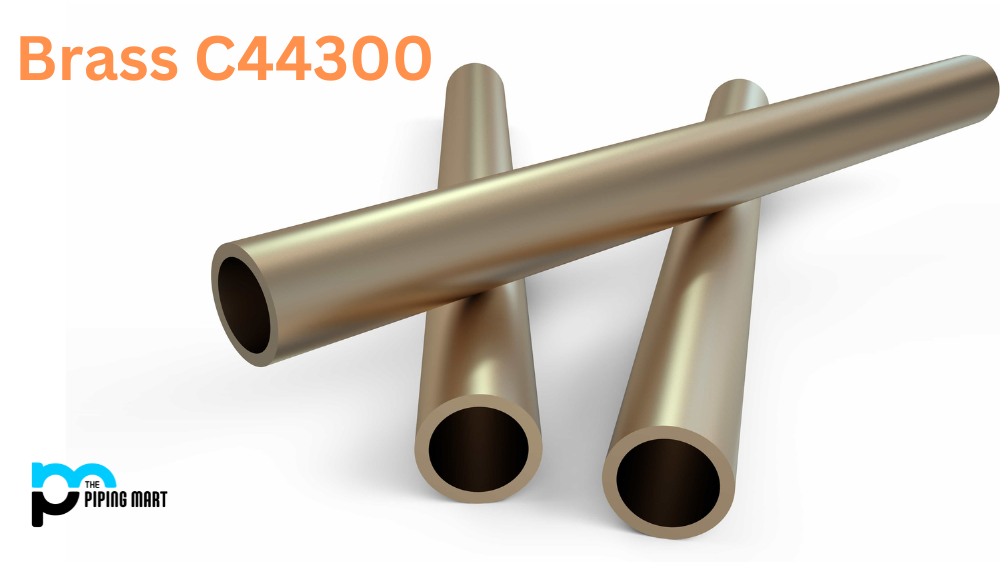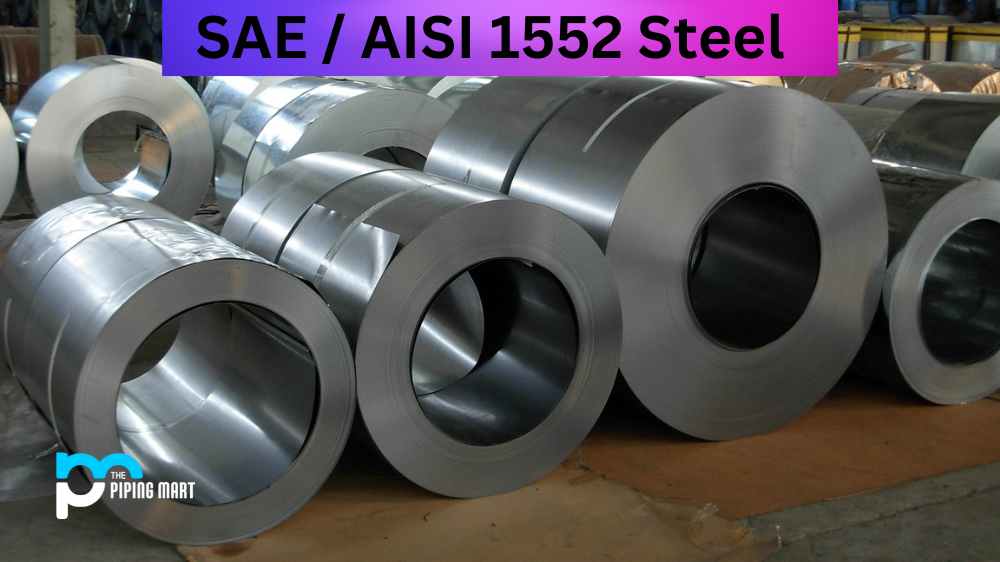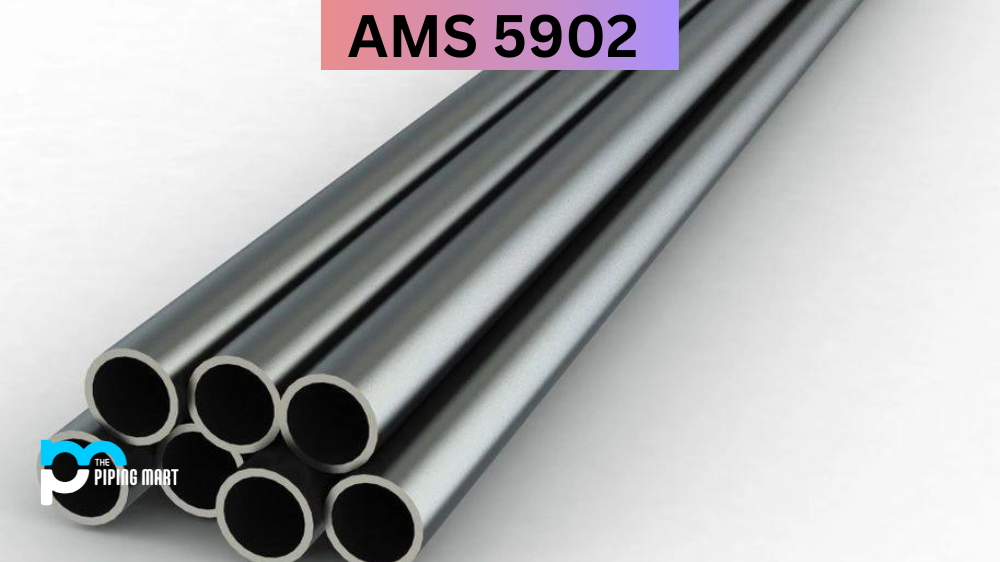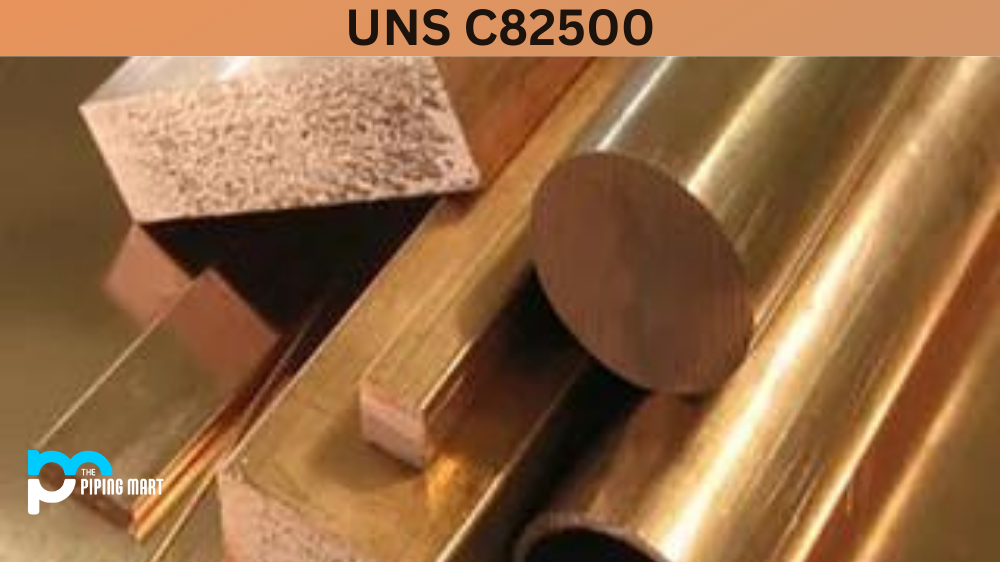Whether you are a metalworker, an engineer, or just interested in brass C44300, this guide will provide valuable insights into its composition, physical and mechanical properties, uses, and more. Read on to learn everything you need to know about brass C44300.
What is Brass C44300?
Brass C44300 is a versatile and widely-used copper-zinc alloy. It is a type of brass that is highly resistant to corrosion and is commonly used in various industrial and architectural applications.
C44300 Composition
Brass C44300, also known as admiralty brass or naval brass, comprises 60% copper, 40% zinc, and tin. The tin content, which ranges from 0.1% to 0.5%, enhances the alloy’s resistance to corrosion, especially in marine environments. The exact composition of brass C44300 can vary depending on the manufacturer, but it typically falls within the ranges mentioned earlier.
| Element | Content (%) |
|---|---|
| Cu | 71 |
| Sn | 1 |
| Zn | 28 |
C44300 Physical Properties
Brass C44300 has excellent physical and mechanical properties, including high strength, wear resistance, and machinability. Its density is around 8.53 g/cm3, and its melting point is approximately 890°C.
| Properties | Metric | Imperial |
|---|---|---|
| Density | 8.53 g/cm3 | 0.308 lb/in³ |
C44300 Mechanical Properties
Brass C44300 has a tensile strength of 300 MPa and a yield strength of 70 MPa. It also has a low coefficient of thermal expansion and high thermal conductivity.
| Properties | Metric | Imperial |
|---|---|---|
| Tensile strength | 331-379 MPa | 48000-55000 psi |
| Yield strength (depending on temper) | 124-152 MPa | 18000-22000 psi |
| Elongation at break (in 0 mm) | 65% | 65% |
| Creep strength (@425°C, time 3.60e+6 sec/797°F, time 1000 hr, 0.0001) | 0.370 MPa | 53.7 psi |
| Charpy impact | 82.4 J | 60.8 ft-lb |
| Fatigue strength (@# of cycles 1.00e+7, @# of cycles 1.00e+7, source does not state temper) | 115-125 MPa | 16700-18100 psi |
| Elastic modulus | 117 GPa | 17000 ksi |
| Poisson’s ratio | 0.34 | 0.34 |
| Machinability (UNS C36000 (free-cutting brass) = 100) | 30 | 30 |
| Shear modulus | 40.0 GPa | 5800 ksi |
C44300 Thermal Properties
| Properties | Metric | Imperial |
|---|---|---|
| Thermal expansion co-efficient (@20-300°C/68-572°F) | 20.2 µm/m°C | 11.2 µin/in°F |
| Thermal conductivity (@20°C/ 68°F) | 110 W/mK | 763 BTU in/hr.ft².°F |
C44300 Equivalents
- ASME SB111
- ASME SB171
- ASME SB359
- ASME SB395
- ASME SB543
- ASTM B111
- ASTM B135
- ASTM B171
- ASTM B359
- ASTM B395
- ASTM B432
- ASTM B543
C44300 Uses
Brass C44300 is commonly used in marine applications due to its excellent corrosion resistance. It is also used in heat exchangers, condensers, valves, and fittings because of its high thermal conductivity and machinability. Other applications include electrical components, architectural trim, and decorative hardware.
C44300 Corrosion Resistance
One of the primary advantages of brass C44300 is its excellent corrosion resistance, especially in marine environments. The addition of tin to the alloy helps prevent dezincification – a type of corrosion that can occur in brasses with high zinc content. As a result, brass C44300 is frequently used in seawater applications, such as propellers, pumps, and marine hardware.
C44300 Heat Treatment
Brass C44300 can be annealed for improved workability and reduced internal stress. For optimal results, it should be heated to a temperature range of 400-650°C for 30 minutes to 1 hour, then cooled slowly in air. However, subjecting brass C44300 to high temperatures for prolonged periods is not recommended, as it may lead to brittleness and reduce its overall properties.
C44300 Machining
Brass C44300 has good machinability and can be easily turned, drilled, milled, and tapped. Carbide-cutting tools are recommended for machining this alloy. It is essential to use proper machining techniques and lubricants to prevent overheating and tool wear.
C44300 Welding
Brass C44300 can be welded using various methods, including gas tungsten arc welding (GTAW), gas metal arc welding (GMAW), and oxyacetylene welding. It is essential to prevent porosity and cracking during welding, such as using proper filler metal and preheating the workpiece.
Conclusion
Brass C44300 is a valuable brass alloy with numerous benefits, including excellent corrosion resistance, high strength, and machinability. It is widely used in marine, industrial, and architectural applications. Its unique composition of copper, zinc, and tin gives it desirable physical and mechanical properties, making it an attractive choice for various applications. By understanding the composition, properties, and uses of brass C44300, you can make informed decisions about its implementation in your projects.

A passionate metal industry expert and blogger. With over 5 years of experience in the field, Palak brings a wealth of knowledge and insight to her writing. Whether discussing the latest trends in the metal industry or sharing tips, she is dedicated to helping others succeed in the metal industry.




